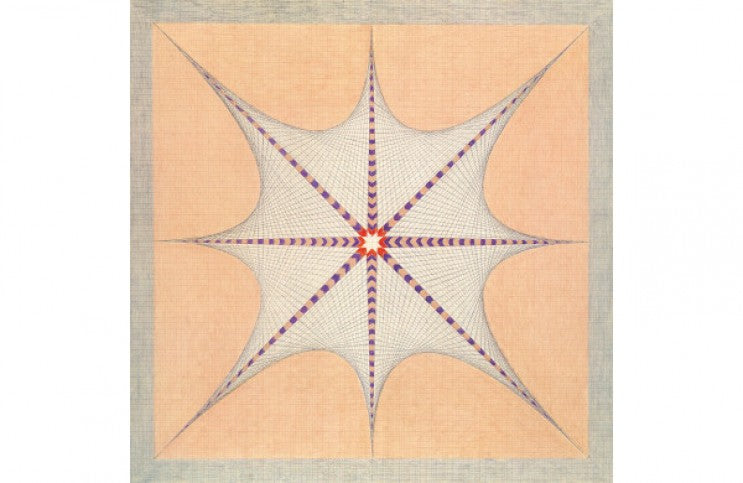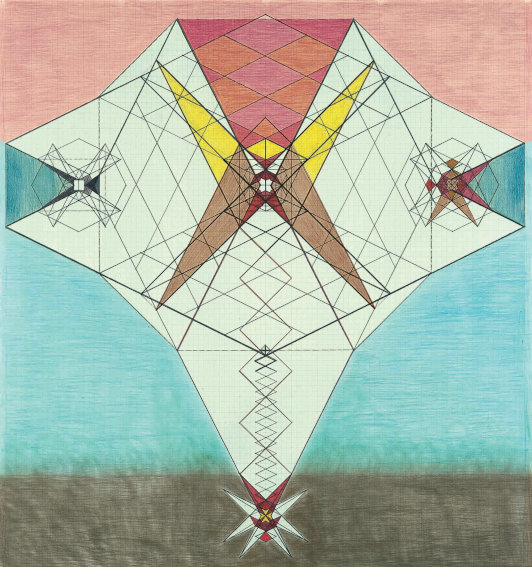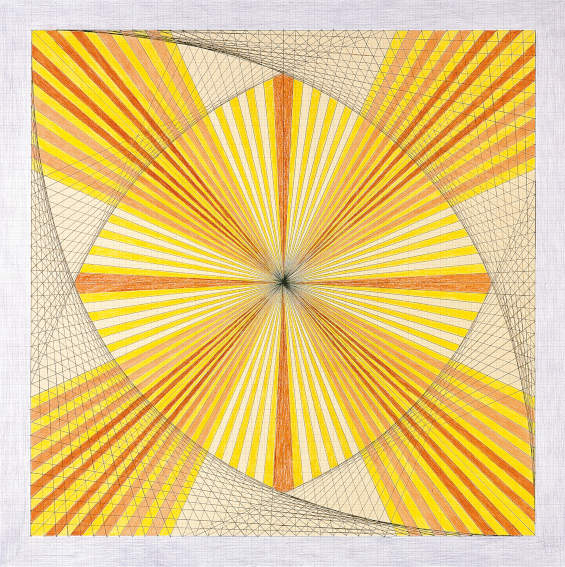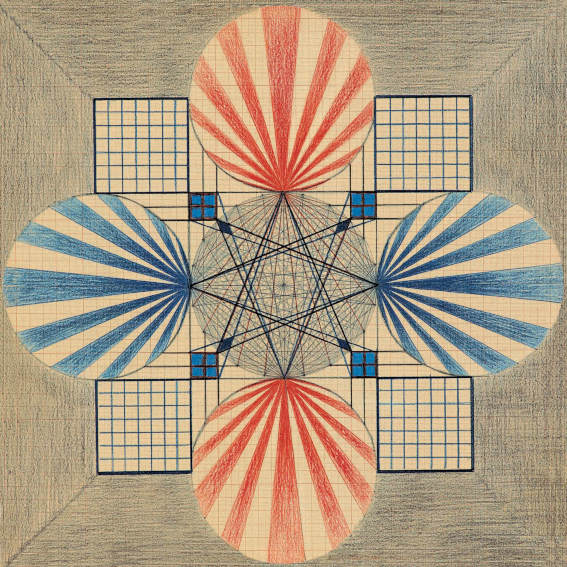
Blog Home Emma Kunz's Drawings, Between Spirituality and Abstraction
This Spring, Serpentine Gallery in London will open Emma Kunz - Visionary Drawings, the first exhibition of the work of Emma Kunz (1892–1963) in the United Kingdom. A Swiss-born Spiritualist, Kunz created more than 400 drawings in her lifetime. Her works were never publicly exhibited until ten years after her death,partially because they were not made for purely aesthetic purposes; they were utilitarian tools created as part of her side job as a mystic healer. Kunz was 18 years old when she first claimed to possess the extrasensory power of prophecy. Yet, she was not always able to make her living from mysticism. For sixteen years, she worked as an assistant to the Swiss figurative artist Jakob Friedrich Welti. While working in his studio, Kunz taught herself to make geometric drawings on large pieces of graph paper, using colored pencils and crayons. She then adapted this technique as a way to map out the divinations she allegedly channeled during her mystic healing treatments. Her psychic activities were conducted by way of a divining pendulum—a string attached to a stone weighted on each side with two smaller stones, one silver and one jade. Holding the pendulum aloft, Kunz would translate its mysterious movements then use them to inspire complex, geometric compositions that she would in turn use to diagnosis the patient. Considering their foundation, it is understandable that some difference of opinion exists as to whether these drawings should be seriously considered as abstract art, or as art at all. Whatever contemporary audiences think about their pseudoscientific origins, however, it is undeniable that Kunz created a body of work that is frequently beautiful, and occasionally even sublime.
Power Grids
In multiple recent exhibitions, the works of Kunz have been exhibited alongside those of Agnes Martin, Georgiana Houghton, and Hilma af Klint. The associations seem to arise from influences ranging from spiritualism to the grid, but all three comparisons are a bit baffling. Houghton and af Klint both claimed to be guided by spirits, as did Kunz. But not in the same ways. A devout Christian, Houghton stated that her fantastical, swirling jungles of lines and forms were the result of direct channeling from God and the saints. One of her most famous images even portrays the face of Jesus. She produced most of her so-called “spirit drawings” during séances, however, and charged for her services as a medium. She also associated with a fraudulent “spirit photographer,” causing critical thinkers to presume that her art, however lovely, was more of a scheme. On the other hand, there is no questioning the sincerity, nor artistic dedication, of Hilma af Klint, who created more than 1200 paintings and drawings in her lifetime. She was a devout spiritualist whose philosophies were the same as those that guided Wassily Kandinsky and many other early abstract artists.

Emma Kunz - Work No. 012. © Emma Kunz Zentrum
Agnes Martin does not deserve to be lumped into this grouping of artists at all. She was spiritual, but she was not a Spiritualist. She was not overtly religious, nor did she ever claim to be channeling spiritual energies into her art. She was a dedicated, sincere, and undeniably brilliant artist who embraced the meditative potential of art. She intended for her work to be contemplated on those terms, and believed in the power of geometry and the grid to abstractly convey universal meaning. But to categorize her alongside self-proclaimed mediums is far fetched. And so the question remains whether Kunz belongs in the company of these other three artists. She did not come close to the exhibiting the aesthetic or intellectual prowess of Agnes Martin. Nor did she come close to compiling the impressive body of work that af Klint created. And since Houghton is considered by many people to have been little more than an artful quack, perhaps Kunz would be better served without any of these comparisons.

Emma Kunz - Work No. 013. © Emma Kunz Zentrum
Visionary Drawings
To some extent, Emma Kunz - Visionary Drawings at Serpentine Gallery endeavors to avoid the pitfalls of all of these faulty comparisons by simply focusing on the drawings themselves. By referring to them as “visionary,” and not necessarily mystical, it invites audiences to share in the visual power of the works without having to dive down the metaphysical rabbit hole. We can marvel at the delicacy and intricacy of linear compositions of “Work Number 004” and “Work Number 11” (all of her works were untitled and undated), and simply lose ourselves in their contemplative geometric fields. Even if, in the end, some viewers decide these drawings resemble nothing other than incredibly complex doodles, they will have to admit that Kunz had an undeniable way with color relationships, and an intuitive grasp of compositional harmony. Let go of the magical thinking, and the possibility of magical seeing opens up.

Emma Kunz - Work No. 396. © Emma Kunz Zentrum
For those viewers who are looking for more of the spiritual side of things, however, this exhibition also offers one additional element that will surely ignite the imagination. Christodoulos Panayiotou created benches for the show out of a rock called AION A. Named by Kunz in 1941, the rock supposedly has healing qualities. According to legend, Kunz was conducting a pendulum reading on a crippled boy when she had a vision that a locally mined rock could provide a cure. She went to a nearby grotto and dug up some of the rock then instructed the parents of the boy how to grind it up and use it as medicine. The rock supposedly cured the boy, and today the Emma Kunz Center is located at that same grotto, in Würenlos, Switzerland. The rock is even still ground up and sold as a homeopathic medicine, and its packaging is adorned with Kunz drawing number 168. Whether sitting on the AION A benches at the exhibition will cure whatever ails you is unknown. But the benches will at least provide a fresh perspective from which to analyze the work of this fascinating woman, whether you ultimately decide to call her an abstract artist or not.
Emma Kunz - Visionary Drawings is on view at Serpentine Gallery in London from 23 March to 19 May 2019.
Featured image: Emma Kunz - Work No. 011. © Emma Kunz Zentrum
All images used for illustrative purposes only
By Phillip Barcio






